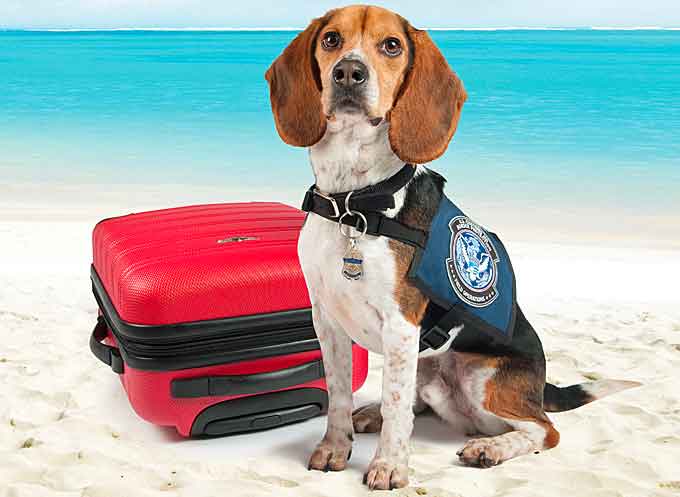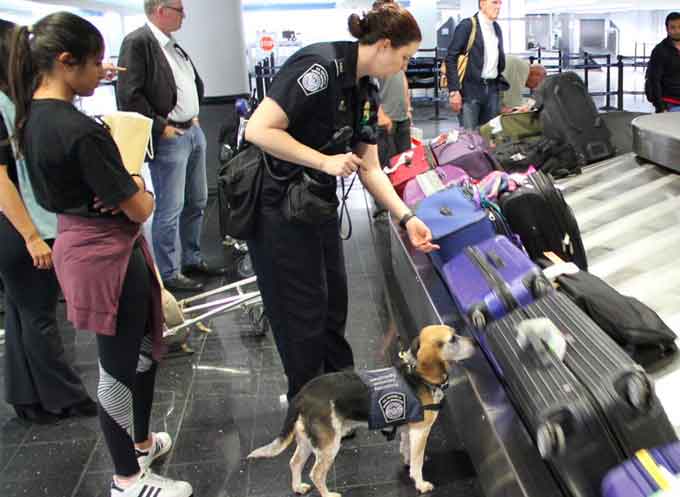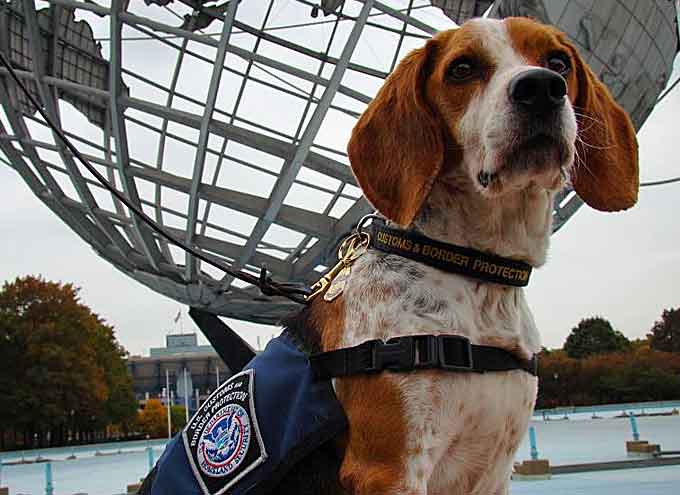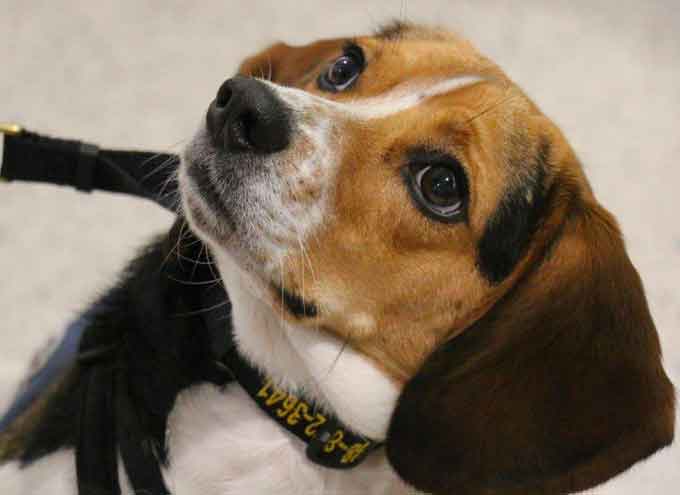
Imagine being less than two feet tall and having to navigate the luggage carousel at one of the busiest airports in America.
This could be a daunting and intimidating task, but everyday a non-intimidating canine battles through the large crowds sniffing backpacks and luggage looking for food.

Frodo, a Beagle, is a U.S. Customs and Border Protection (CBP) agricultural products detection dog.
He has been working at Chicago O’Hare International Airport since 2011, and according to Jessica Anderson, a CBP Agricultural Specialist Canine Handler, Frodo loves his job.
“This is a Beagle’s dream job. They are very food driven, and Frodo is always looking for food. If they know where food is, they will find it. ”
When people think of law enforcement canines, Beagles are probably one of the last breeds someone would envision.
Anderson believes the program to start using Beagles began in the 80’s.
“We wanted to create public awareness for the agricultural program. Beagles are cute and cuddly and not intimidating, even though Frodo has scared some people.”

Frodo’s specialty is finding apples, citrus, mangos, beef and pork.
As the luggage carousel turns, Frodo is hard at work, standing on his hind legs to sniff the backpacks people are wearing and walking the lines of people collecting their bags.
Frodo is trained to provide a passive response to target odors.
If he finds something, he will sit down alerting Anderson he is on to an odor.
As soon as this happens, Anderson intervenes and asks the passenger if they have any food items in their bag.
“This is usually the time the passenger remembers they do have something,” Anderson replied.
(Learn More. CBP Agriculture Specialist Don Polliard explains what it takes for he and his four legged partner Hair E to keep America’s agriculture safe. Courtesy of U.S. Customs and Border Protection and YouTube. Posted on Aug 29, 2017)
While Frodo looks like a dog you want to pet and snuggle up with, when he is working petting him can be a distraction and is not allowed.
Most of the agricultural canines are rescue dogs, rescued from a shelter. Rescue Beagles are usually between one to three years old when procured by the academy for this program.
“The retirement age for Beagles is usually nine years, but because they are rescues we don’t know their exact age,” Anderson said.

“As long as the Beagle has a high food drive, wants food more than anything else in the world, and are between the ages of one and three, we may rescue and train them.
“The age requirement is in place because we want the most productive years from the dog during service.”
Beagles are one of the healthiest breeds, with an average lifespan of 15 years. Additionally, they are smaller dogs eating less than the larger breeds, and because they are rescues, CBP is not relying on breeders.
Each Beagle goes through a training period of 10- weeks with the paired handler. During the training, handlers become familiar with the dog before they are put to work at their respective port of entry.
Each pup can find various plants, meats, fruits and vegetables in addition to the training odors of apples, citrus, mangos, beef and pork.
(Learn More. Pavia Rosati goes to the airport to find out what happens to food smugglers and their confiscated delicacies. She meets with the people -and the beagle- who enforce the law. Courtesy of Live from Prince Street and YouTube. Posted on Jun 9, 2016)
“I believe there was a survey and these training odors were the five most commonly found items,” Anderson said.
“This data allowed us to hone in and train the dogs in what to search for.” The training doesn’t stop once they are certified. These canines and their handlers have to recertify every year.

Frodo isn’t just looking for his five main food groups.
He has found a commercial shipment of dog bones, packed in suitcases, elephant hair bracelets, birds nest soup from Vietnam and other extravagant items.
Frodo is responsible for almost $100,000 worth of seizures.
Though Frodo doesn’t work a 9-5 job, he works about an hour-on/hour-off schedule and sometimes that may vary given operational volumes.
This is because, “Dogs aren’t machines,” Anderson remarked. Frodo is between seven to nine years old, so he probably has about one more year on the job, after that he will retire.
While Anderson did adopt her last partner, Dixie, when Frodo retires he will likely be going to a friend of the family who recently lost their own Beagle.
(Learn More. Courtesy of Quartz and YouTube. Posted on Oct 6, 2016)

















